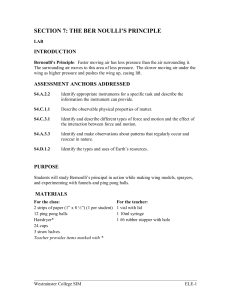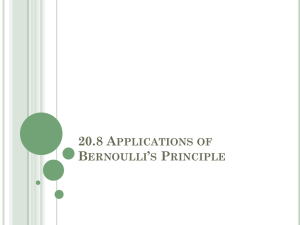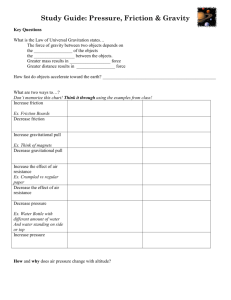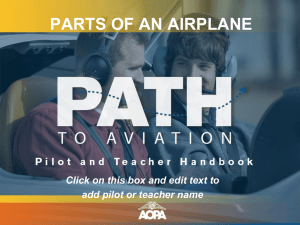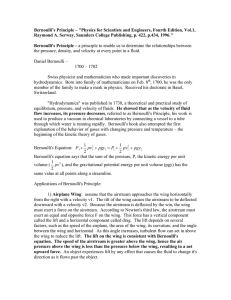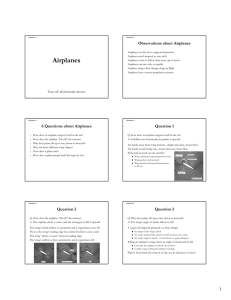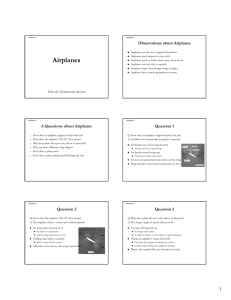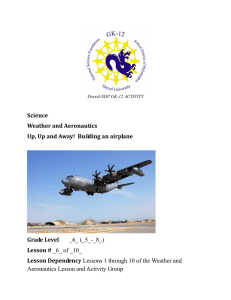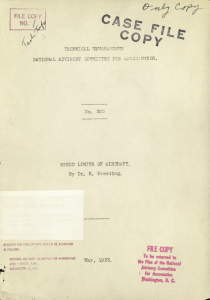Document 10519402
advertisement
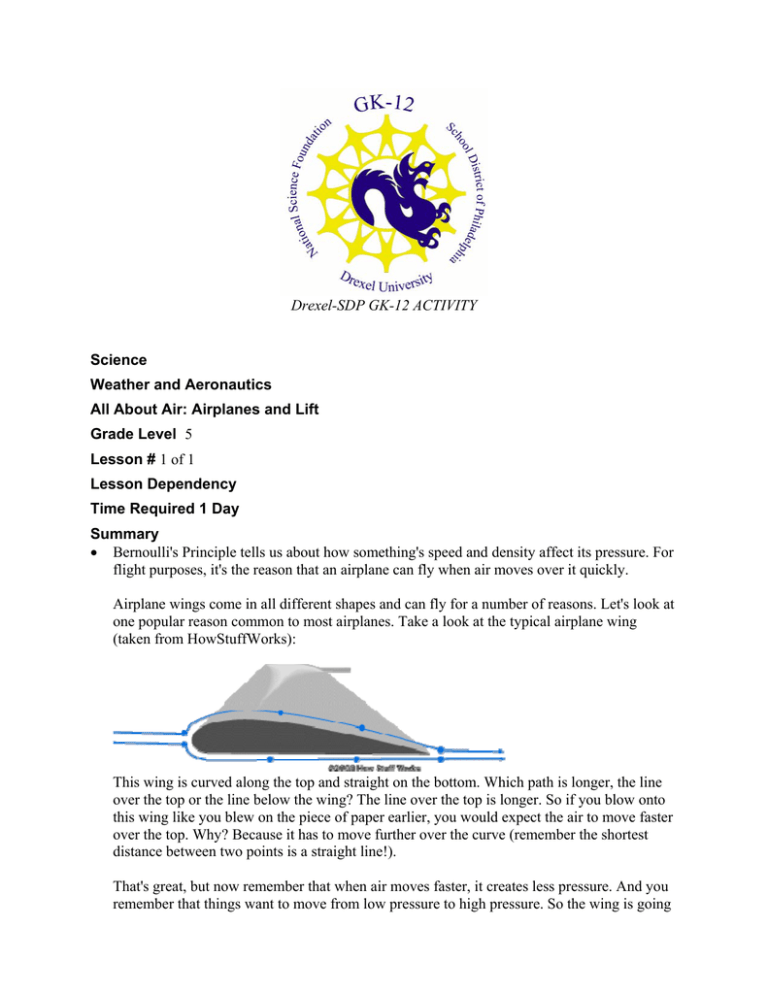
Drexel-SDP GK-12 ACTIVITY Science Weather and Aeronautics All About Air: Airplanes and Lift Grade Level 5 Lesson # 1 of 1 Lesson Dependency Time Required 1 Day Summary • Bernoulli's Principle tells us about how something's speed and density affect its pressure. For flight purposes, it's the reason that an airplane can fly when air moves over it quickly. Airplane wings come in all different shapes and can fly for a number of reasons. Let's look at one popular reason common to most airplanes. Take a look at the typical airplane wing (taken from HowStuffWorks): This wing is curved along the top and straight on the bottom. Which path is longer, the line over the top or the line below the wing? The line over the top is longer. So if you blow onto this wing like you blew on the piece of paper earlier, you would expect the air to move faster over the top. Why? Because it has to move further over the curve (remember the shortest distance between two points is a straight line!). That's great, but now remember that when air moves faster, it creates less pressure. And you remember that things want to move from low pressure to high pressure. So the wing is going to want to push upward because of all this. That's lift! And that's part of the story of what makes airplanes fly. In later lessons we will learn how to control airplanes, and how they navigate through our skies each day. We will even model and build our own airplane to test in a wind tunnel, that simulates blowing air over the wing surfaces. Engineering Connection The aeronautics course is intended as a multi-disciplinary course in physics, math and history of aviation. Navigation, forces of flight, principles of flight, history of flight, and environmental factors (including weather and landforms) are specifically investigated. The core curricular items are emphasized, and aviation is considered an underlying theme. The intent is to provide grounding to the curriculum components learned in a typical K-12 school year. Aviation easily generates a lot of excitement among this age group, and as a result, measurable results are expected in these subjects. Keywords • Air Pressure, Weather, Aeronautics, Properties of Air, Bernoulli’s Principle Educational Standards: 3.5.7, 3.6.7 Pre-Requisite Knowledge Bernoulli’s Principle Lesson Learning Objectives • Students will build upon the lesson on Bernoulli’s Principle and, after this lesson, they will use Bernoulli’s Principle to show that an object (such as an airplane) can be kept afloat in a fluid (such as air) by manipulating wind velocity and pressure. Students will identify and demonstrate that it is the wing’s shape that causes this wind velocity difference, and thus the pressure difference that causes the wing structure to lift. Associated Activities o To test the idea, take the same piece of paper you used earlier and shape it like this wing. Blow on it and notice that it moves upwards! Owner Drexel University Author William Mongan Date 9/11/2007 2
